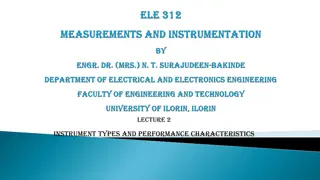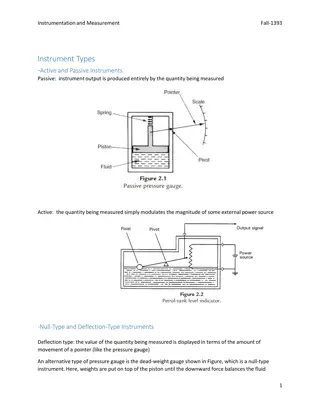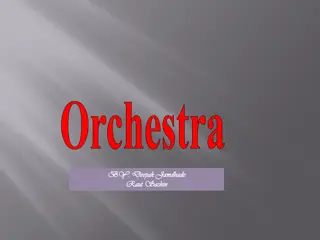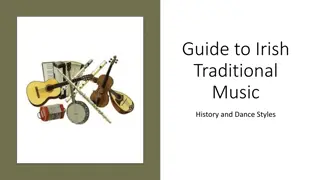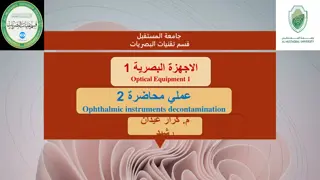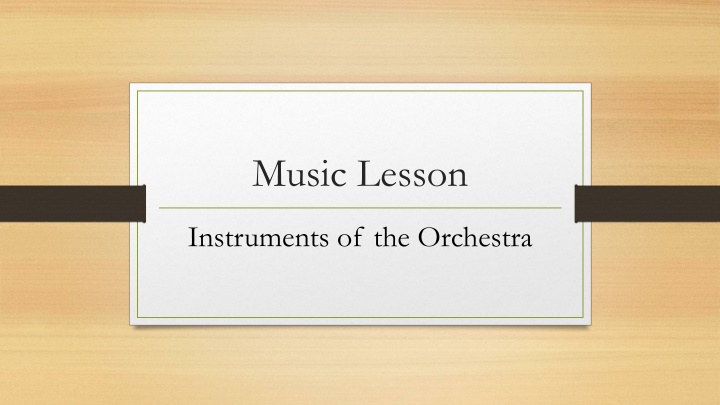
Exploring Instruments of the Orchestra and Peer Gynt's Adventure
Discover the enchanting world of orchestral instruments and follow Peer Gynt's daring escapade into the Mountain King's castle. Learn about the different instrument families - strings, woodwinds, brass, and percussion. Immerse yourself in the musical journey through captivating visuals and the iconic piece "In the Hall of the Mountain King" by Edvard Grieg.
Download Presentation

Please find below an Image/Link to download the presentation.
The content on the website is provided AS IS for your information and personal use only. It may not be sold, licensed, or shared on other websites without obtaining consent from the author. If you encounter any issues during the download, it is possible that the publisher has removed the file from their server.
You are allowed to download the files provided on this website for personal or commercial use, subject to the condition that they are used lawfully. All files are the property of their respective owners.
The content on the website is provided AS IS for your information and personal use only. It may not be sold, licensed, or shared on other websites without obtaining consent from the author.
E N D
Presentation Transcript
Music Lesson Instruments of the Orchestra
Instruments of the Orchestra Have you ever read the legend of Peer Gynt? (it will be sent as an attachment too )
Instruments of the Orchestra Peer is an adventurous boy. In one of his adventures, he tries to sneak into the Mountain King s castle. The music gives us a musical picture of Peer s journey inside the castle. The instruments that we hear describe Peer s steps. We can also hear the trolls chasing Peer. Let s listen to how the music describes the story by watching the video in the next slide.
Instruments of the Orchestra Watch this video and listen to the music In the Hall of the Mountain King by Edvard Grieg
Instruments of the Orchestra Musical instruments are grouped into different families based on the way the instrument makes its sound. There are four main families of instruments: strings, woodwinds, brass, and percussion. Here is how an orchestra is often set up:
Strings The four most commonly used instruments in the string family are the violin, the viola, the cello and the double bass. They are all made by gluing pieces of wood together to form a hollow sound box. The quality of sound of one of these instruments depends on its shape, the wood it is made from, the thickness of both the top and back, and the varnish that coats its outside surface. The bow is made of wood and horsehair.
Woodwinds The most common woodwind instruments are the flute/piccolo, the clarinet, the oboe and bassoon. Instruments in the woodwind family used to all be made of wood, hence the name, but now they can be made of wood, metal, plastic or some combination of materials. They are all tubes with an opening at one end and a mouthpiece at the other end. They each have rows of holes that are covered by metal caps called keys. Pressing on different keys produces different musical notes the sound changes depending on where the air leaves the instrument (through one of the key holes or out the far end).
Brass The most common brass instruments are the trumpet, the French horn, the trombone and the tuba. Brass instruments are essentially very long pipes that widen at their ends into a bell- like shape. The pipes have been curved and twisted into different shapes to make them easier to hold and play. Instruments in the brass family produce their sound when the player buzzes her or his lips while blowing air through the mouthpiece. Most brass instruments have valves attached to their long pipes. When the player presses down on the valves, they open and close different parts of the pipe, increasing the length of the pipe when played and creating a lower sound.
Percussions The most common percussion instruments are the drums, the tambourine, the triangle, the maracas (shakers), the cymbals and the timpani. The percussion section provides a variety of rhythms, textures and tone colours to orchestral music. Instruments in the percussion family make sound in one of three ways, by striking, shaking, or scraping. Percussion instruments can also be tuned or untuned. Tuned instruments play specific pitches or notes, just like the woodwind, brass and string instruments. Untuned instruments produce a sound with no definite pitch, like the sound of hitting two pieces of wood or metal together. Percussion instruments are an international family, representing musical styles from many different cultures. Keyboard instruments such as the piano are a special class of percussion instrument.
Homework Now you have a handout to work out. In the handout you will see some of the instruments which you heard in the video. Kindly indicate to which family of the orchestra do these instruments belong. Note that the instruments and their names are not in order. The handout is in the next slide.






